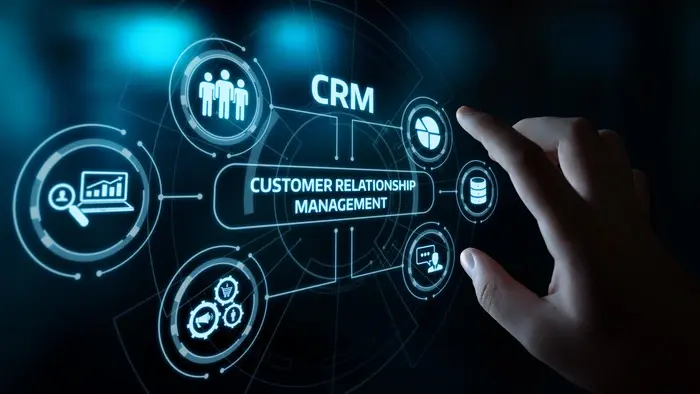The Private Club Guide to HubSpot Success: 14 Mistakes That Cost You Members
If you're responsible for membership growth, retention, or management, and your club uses HubSpot, you might suspect you're only scratching the...
4 min read
 Kathy Heil
:
October 14, 2025
Kathy Heil
:
October 14, 2025
I've had this conversation more times than I can count.
A membership director sits down with me, frustrated and exhausted. Her club has a perfect operational system. You know, the one designed to manage members, tee times, dining reservations. There's a CRM built right in. But when I ask how she's tracking prospects, she pulls out a stack of sticky notes or opens up an Excel spreadsheet she maintains on her personal desktop.
"The system's just too clunky for what I need to do," she explains. "This is faster."
I get it. I really do. But what feels faster in the moment creates chaos that costs far more than most clubs realize.
Here's what's actually happening when membership directors create their own workarounds.
The operational system your club invested in was built for member engagement: tracking who's using which facilities, managing billing, and coordinating events. It does those things well. But it wasn't designed for what your membership director needs most: a clear view of where every prospect stands and what needs to happen next.
So she builds her own system. Sticky notes on the monitor. A spreadsheet with color-coded cells. Maybe a notebook she carries everywhere. It feels manageable when there are five prospects in the pipeline. However, when that number reaches twenty or thirty, especially during peak inquiry season, the cracks begin to show.
And those cracks? They're expensive.
Without a system that prompts follow-up, your membership director relies on memory and manual review. Between the prospect tours, the events she attends, and the newsletter she is trying to get out the door, she means to reach out to the couple who toured three weeks ago. She wants to check in with the family that downloaded your membership guide. But without triggers and reminders, those prospects slip into the "I'll get to them tomorrow" pile. And tomorrow becomes next week. And next week becomes never.
The mentality becomes, "When they're ready, they'll reach back out." But here's the thing: any other business that treated potential customers that way would probably go out of business. Your prospects are researching multiple clubs. The one that stays in front of them, that remembers their preferences and follows up thoughtfully, usually wins.
Your board wants to know where the pipeline stands. How many prospects are we working with? What is the 30, 60, 90-day forecast? What's our projected revenue? Which marketing efforts are paying off?
When your data is stored on sticky notes and in spreadsheets, compiling that report takes hours. Your membership director spends an entire afternoon before each board meeting trying to piece together numbers that should be available at a glance. Hours she could have spent actually talking to prospects.
This might be the most expensive hidden cost of all, because it combines two problems into one devastating loss.
First, there's the institutional knowledge that walks out the door. The prospect she was nurturing for six months? The one who needed to wait until after his bonus hit to move forward? The family whose kids graduate in May, making summer the perfect time to join? All of that context evaporates. The new person starts from scratch. Prospects who were close to joining suddenly feel forgotten. Relationships that took months to build have to start over.
But here's what makes it worse: the chaos itself drives the turnover. Let's be honest about what it feels like to manage prospects through manual processes. It's stressful. Your membership director knows things are falling through the cracks. She feels the weight of remembering every detail, every follow-up, every conversation. That constant pressure contributes to burnout. And when she leaves, you're not just losing an employee and all those prospect relationships—you're starting the cycle over again with someone new who has to build their own workaround system from scratch.
I'm not suggesting your operational system is the problem. It's doing exactly what it was designed to do. But your membership director needs something different: a sales-focused CRM that's built around how prospects actually move through your pipeline.
A sales-focused platform like HubSpot is designed specifically to track prospects, automate follow-up, and provide complete visibility into your membership pipeline. Unlike operational systems built for managing existing members, these tools are built around the sales process itself. And when set up properly (I want to emphasize "set up properly," because even the right platform can create chaos if you're making common setup mistakes), it can eliminate these hidden costs.
Follow-up happens automatically. Someone downloads your membership guide at 11 PM on a Saturday? The system can automatically send a thoughtful follow-up email on Monday morning, add a task for your membership director to call them that week, and track every interaction from that point forward. No sticky notes required.
Prospects get personalized attention at scale. The system remembers that one family is interested in junior programming while another wants to know about the fitness center. When you send updates or invitations, the right information goes to the right people. Prospects feel seen, not spammed.
Reporting takes minutes, not hours. Your board wants a pipeline update? You can pull a dashboard that shows exactly where things stand: number of prospects by stage, projected revenue, conversion rates, all of it. Click, export, done.
Knowledge stays when people leave. Every conversation, every tour, every note about timing or preferences lives in one place. When a new membership director starts, she can pick up exactly where the last person left off. The relationship with each prospect stays intact.
I won't pretend this is a flip-the-switch situation. Making the transition to a sales-focused CRM requires some upfront work. Your membership director needs training: not on how to click buttons, but on how to think about her sales process and structure it in a way that the system can support.
This is where proper setup matters. A CRM thrown at someone without guidance just creates digital chaos, rather than paper chaos. But when you invest in getting it set up around your actual process, when someone takes the time to configure it for how your club works, it becomes intuitive. Most membership directors who make the switch tell me it takes a few weeks to feel comfortable and maybe two months before they can't imagine working any other way. The results can be significant: better follow-up rates, higher conversion, and the peace of mind that comes from knowing nothing is slipping through the cracks.
Here's what I'd encourage you to consider: How much is the current chaos in your club actually costing you?
Add up the lost prospects, the hours spent on manual reporting, the turnover costs, and the staff burnout. Then consider what it would be worth to eliminate those costs.
Your operational system can keep doing what it does well. But giving your membership director a sales-focused CRM that actually supports her work? That's an investment that will pay for itself for years to come.

If you're responsible for membership growth, retention, or management, and your club uses HubSpot, you might suspect you're only scratching the...

This blog was updated for relevance and accuracy on October 29, 2025.

Private club managers and membership directors face a common challenge: maintaining strong relationships with potential members while efficiently...